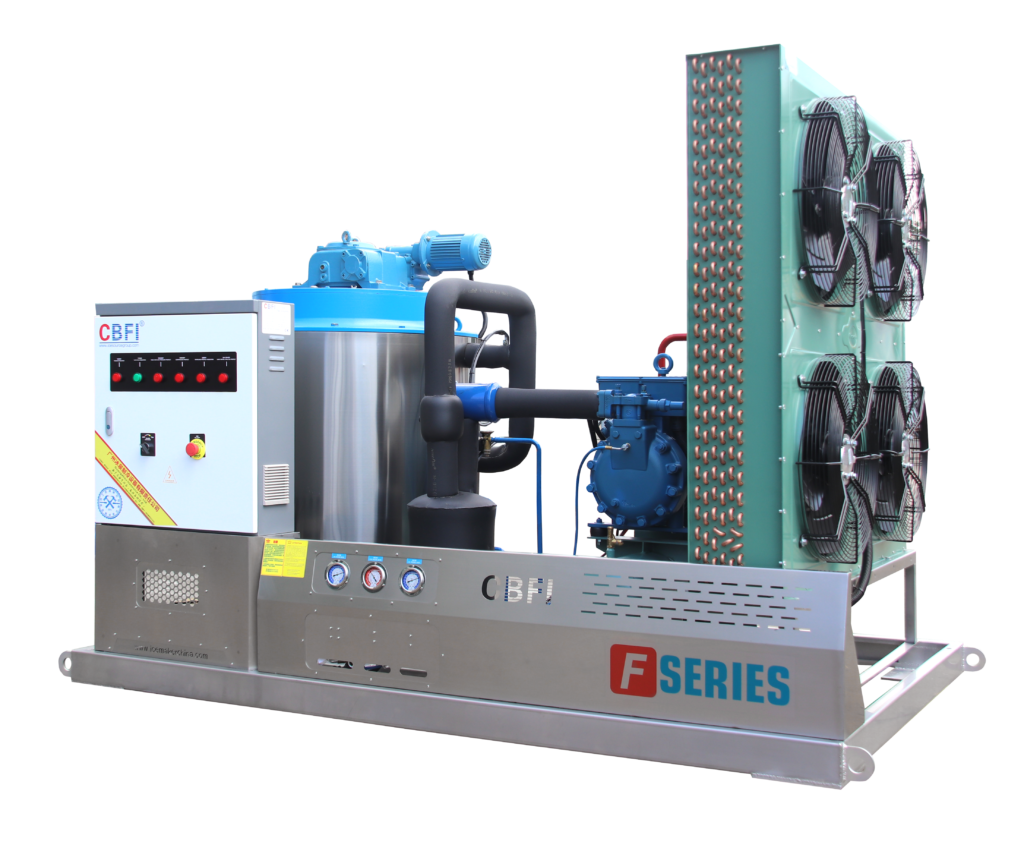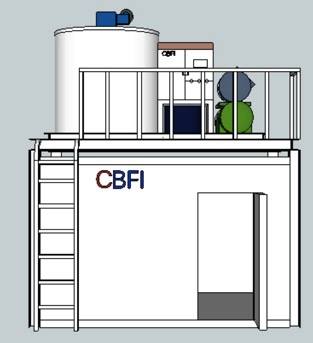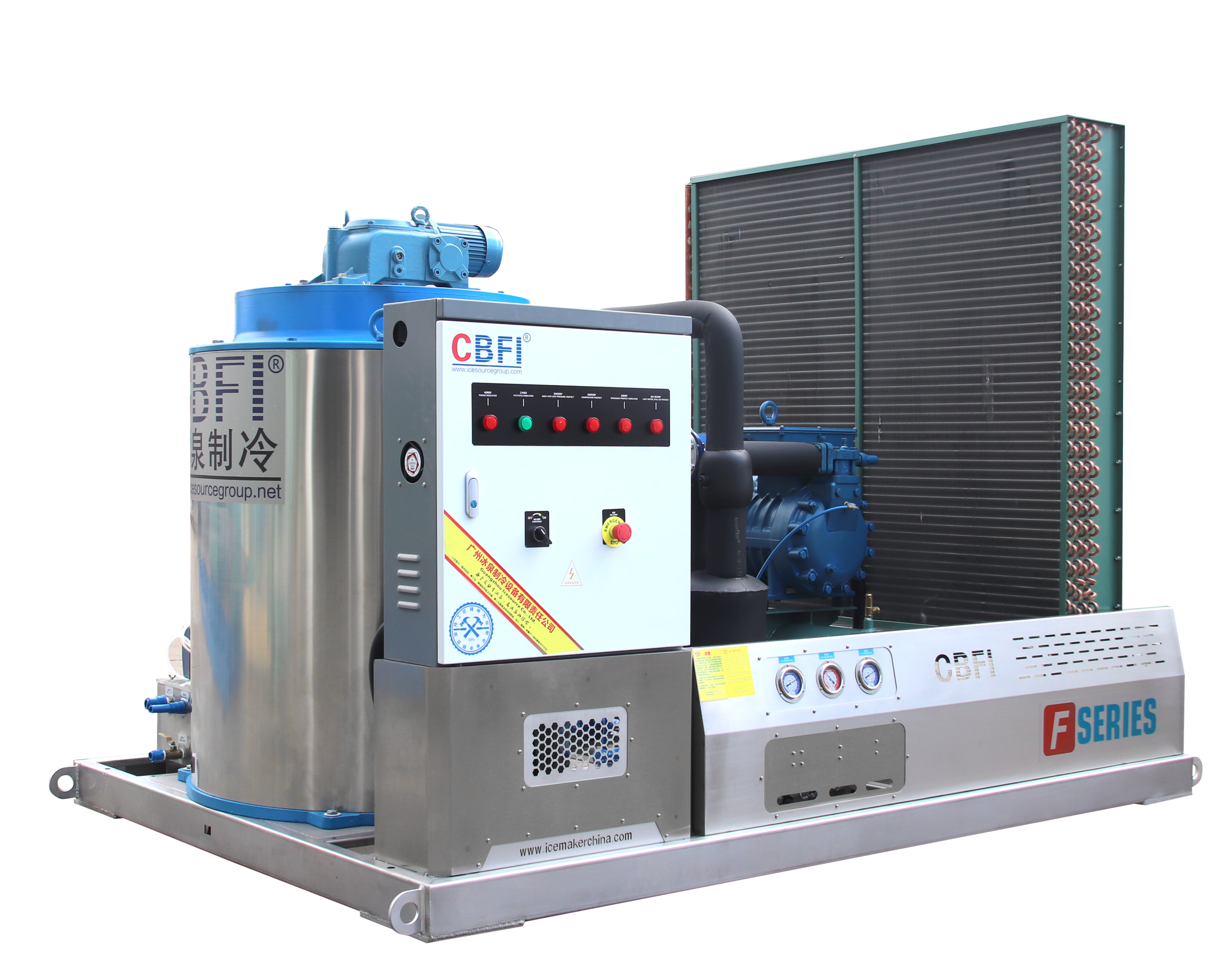Introduction :
Do you need help with your flake ice machine? Whether you’re experiencing poor ice quality, low ice production, or strange noises, troubleshooting your machine is crucial to maintaining its performance and longevity. In this article, we’ll discuss 10 common flake ice machine problems and provide tips on troubleshooting them like a pro.
A ) Common Flake Ice Machine Problem
- Lack of Ice Production,
One of the most common problems with flake ice machines is the need for ice production. This could be due to several reasons, including water supply issues, a malfunctioning thermostat, or pressure switches that need to be adjusted. To troubleshoot this issue, check the water supply and ensure the machine receives the correct amount of water. You can also test the thermostat and pressure switches to ensure they function correctly. - Poor Ice Quality :
If your flake ice machine produces poor-quality ice, the problem could be related to the water quality, ice thickness, or air temperature. Check the water quality and ensure it’s clean and impurities-free. You can also adjust the ice thickness and air temperature to improve the ice quality. - Excessive Noise
If your flake ice machine is making strange or excessive noises, it could be due to loose parts, a malfunctioning water pump, or compressor problems. Check for loose parts and tighten them as necessary. You can also inspect the water pump and compressor to ensure they work correctly. - Leaks :
Leaks are another common issue with flake ice machines. Leaks can occur due to loose connections, damaged hoses, or worn-out seals. Inspect the machine and tighten any loose connections. If you find damaged hoses or worn-out seals, replace them promptly. - High Energy Consumption:
If your flake ice machine is consuming more energy than usual, it could be due to dirty condenser coils, clogged air filters, or damaged fan blades. Clean the condenser coils and air filters regularly to prevent clogs. If you find damaged fan blades, replace them promptly. - Overheating
is another problem that can occur with flake ice machines. This could be due to blocked air vents, dirty condenser coils, or malfunctioning fans. Clean the air vents and condenser coils regularly to prevent blockages. If you find a malfunctioning fan, replace it promptly. - Ice Sticking to Evaporator
If the ice sticks to the evaporator, the problem could be related to water quality, low refrigerant levels, or damaged evaporator plates. Check the water quality and ensure it’s clean and impurities-free. You can also test the refrigerant levels and replace the evaporator plates if they are damaged. - Ice Bridges
Ice bridges are another common problem with flake ice machines. This occurs when the ice forms a bridge between the evaporator and the ice bin, preventing the ice from falling into the bin. To prevent ice bridges, ensure proper water distribution and the ice thickness are correct. You can also adjust the cutting mechanism to prevent ice bridges from forming. - Low Water Pressure
Low water pressure can be a problem for flake ice machines. This could be due to clogged filters, frozen water lines, or a low water supply. Check the filters and replace them if necessary. If you find frozen water lines, thaw them before restarting the machine. - Controller Malfunction
Finally, controller malfunctions can cause problems with flake ice machines. This could be due to faulty sensors, wiring issues, or malfunctioning control boards. Check the sensors and wiring for any damage or lose connections. If you suspect a malfunctioning control board, replace it promptly.
B )Troubleshooting method
So you need help with your ice maker? No worries. We’ve got you covered with some troubleshooting methods that can help you resolve the issue.
First things first, let’s check the water supply. This is often the culprit for the lack of ice production. Ensure the water line is connected correctly and there are no kinks or leaks in the line. If that all checks out, move on to the thermostat and pressure switches. These can also affect ice production and may need adjustment or replacement.
Now, let’s talk about poor ice quality. Different things, including water quality, ice thickness, and air temperature, can cause this. If you’re not happy with the quality of your ice, try adjusting these factors and see if that makes a difference.
If you hear excessive noise from your ice maker, it may be due to loose parts, water pump issues, or compressor problems. Take a closer look and see if you can identify the noise source.
Leaks can be a real pain, but they’re often caused by something simple like loose connections, damaged hoses, or worn-out seals. Check these components and replace them if necessary.
High energy consumption can be a sign that something isn’t working right with your ice maker. Dirty condenser coils, clogged air filters, and damaged fan blades can contribute to this issue.
Overheating is another problem caused by blocked air vents, dirty condenser coils, and malfunctioning fans. Keep an eye out for these issues and take steps to fix them if you notice your ice maker getting too hot.
Ice sticking to the evaporator can indicate water quality issues, low refrigerant levels, or damaged plates. Check these components and see if they need to be replaced.
Ice bridges can be caused by improper water distribution, improper ice thickness, or improper cutting. Make adjustments as needed to prevent this issue from happening.
Finally, if you’re experiencing low water pressure, it may be due to clogged filters, frozen water lines, or a low water supply. Address these issues, and your ice maker should be back up and running quickly.
Remember, troubleshooting your ice maker doesn’t have to be complicated. If you need help figuring out where to start, try going through these potential issues one by one until you find the problem.

C) Preventive Maintenance Tip
Did you know that taking care of your machine with some preventive maintenance can help it last longer and run more efficiently? Here are some tips to keep in mind:
First and foremost, make sure to regularly clean the condenser and evaporator. This will help prevent dust and debris from building up and interfering with the machine’s operation. Plus, it’ll help keep your ice tasting fresh and clean!
If you notice any damage to your ice maker’s parts, address it promptly. Replacing damaged parts as soon as possible can help prevent further issues and extend the life of your machine.
Checking and changing your water filters is another critical step in preventive maintenance. This helps ensure that your ice is made with clean, fresh water and can prevent the buildup of minerals or other contaminants that could affect the quality of your ice.
Proper lubrication of moving parts is also crucial for keeping your ice maker running smoothly. A little lubrication can go a long way in preventing wear and tear on parts and reducing the risk of breakdowns.
Finally, regularly inspecting your ice maker’s electrical connections and wiring is always a good idea. This can help identify any potential issues before they become more significant problems and can help ensure that your machine is running safely.
By following these preventive maintenance tips, you can help keep your ice maker in tip-top shape and avoid more severe issues. Happy ice-making!

D) Conclusion
While regular maintenance can help prevent most flake ice machine issues, some can occur despite your best efforts. If you’re still experiencing problems with your flake ice machine after troubleshooting, it’s best to contact a professional for assistance. A qualified technician can diagnose and repair the issue quickly and effectively, reducing downtime and preventing further damage to your machine. They can also provide helpful tips for maintaining your machine in the future, helping you avoid similar issues.

